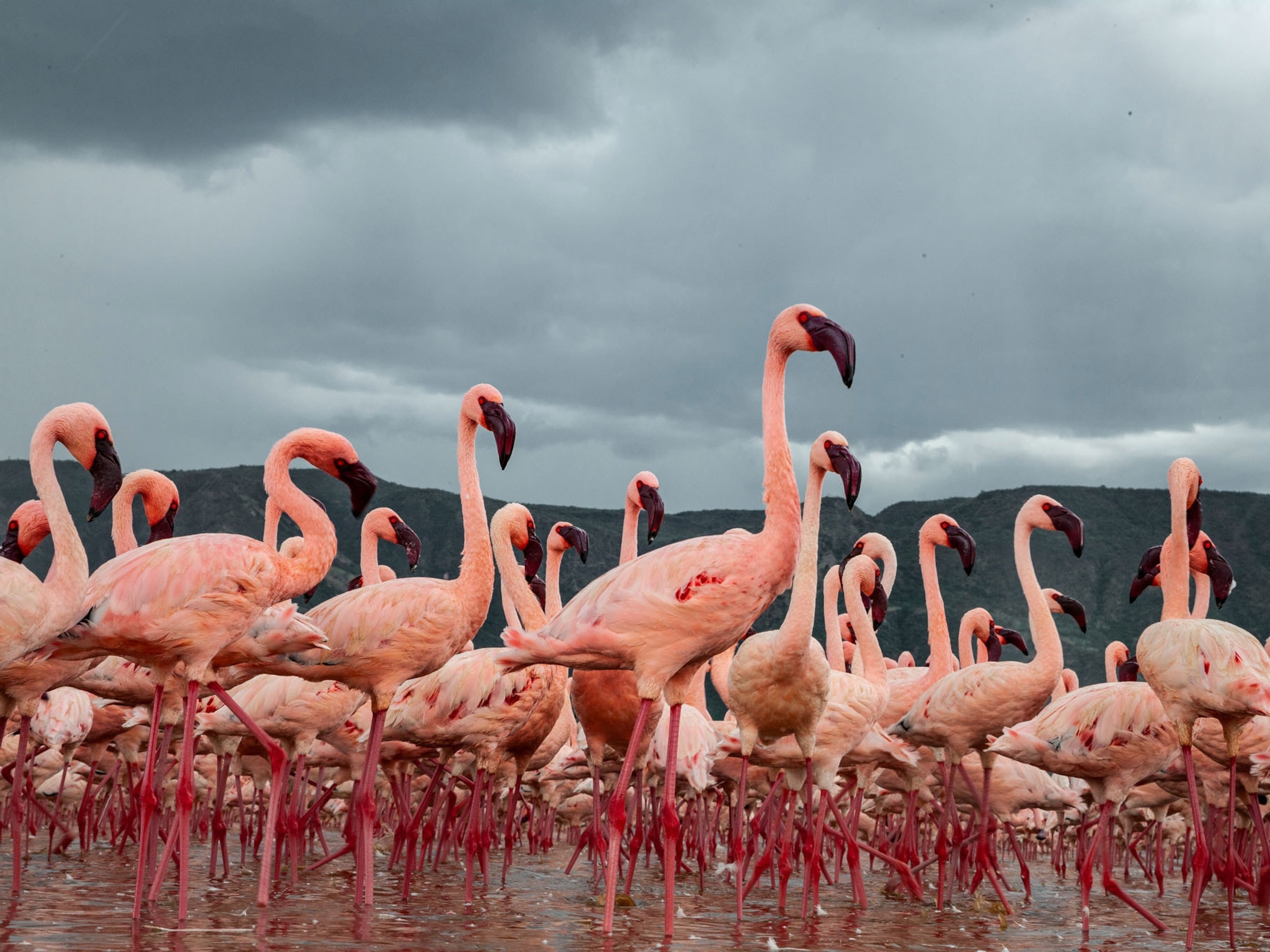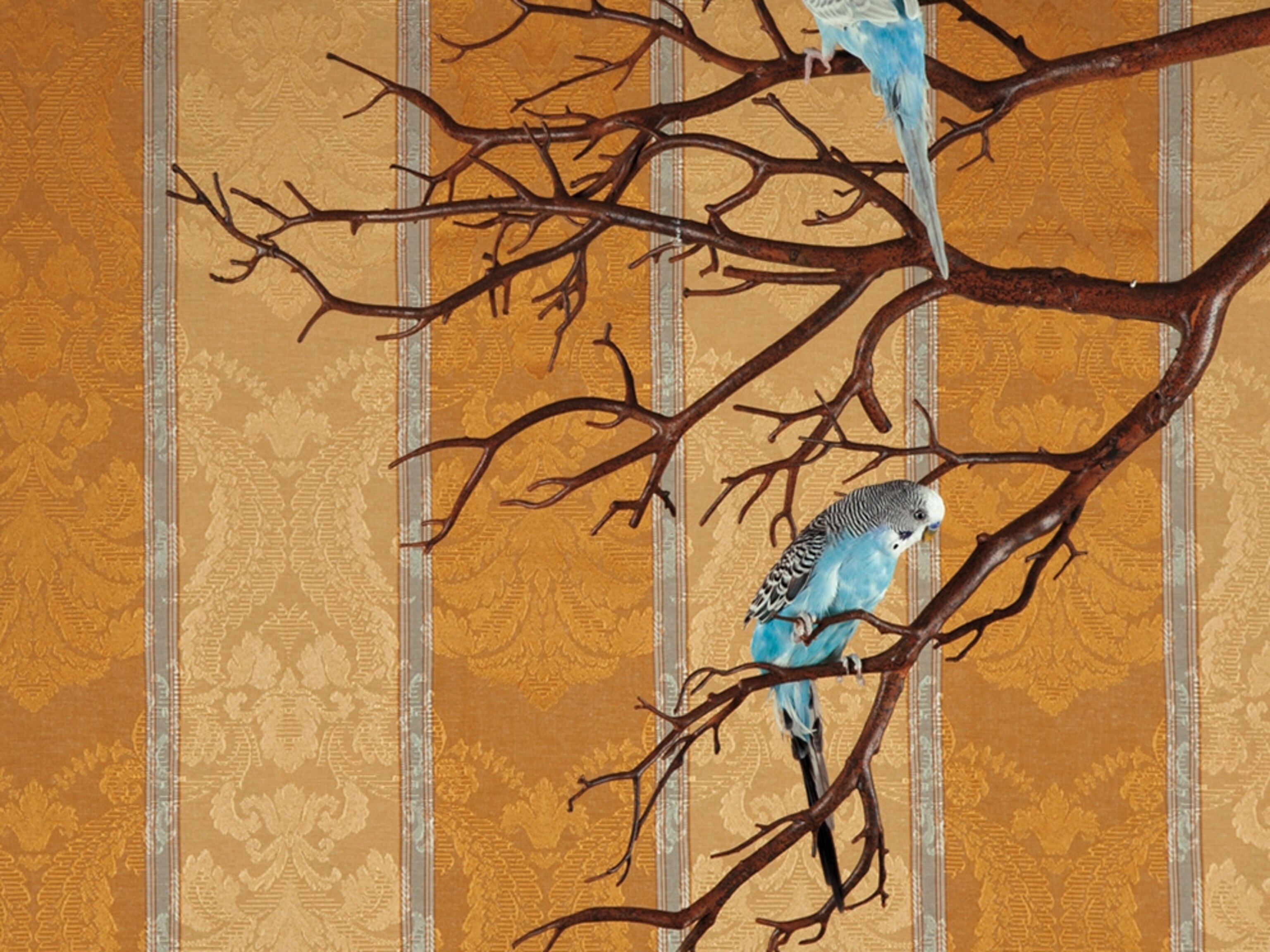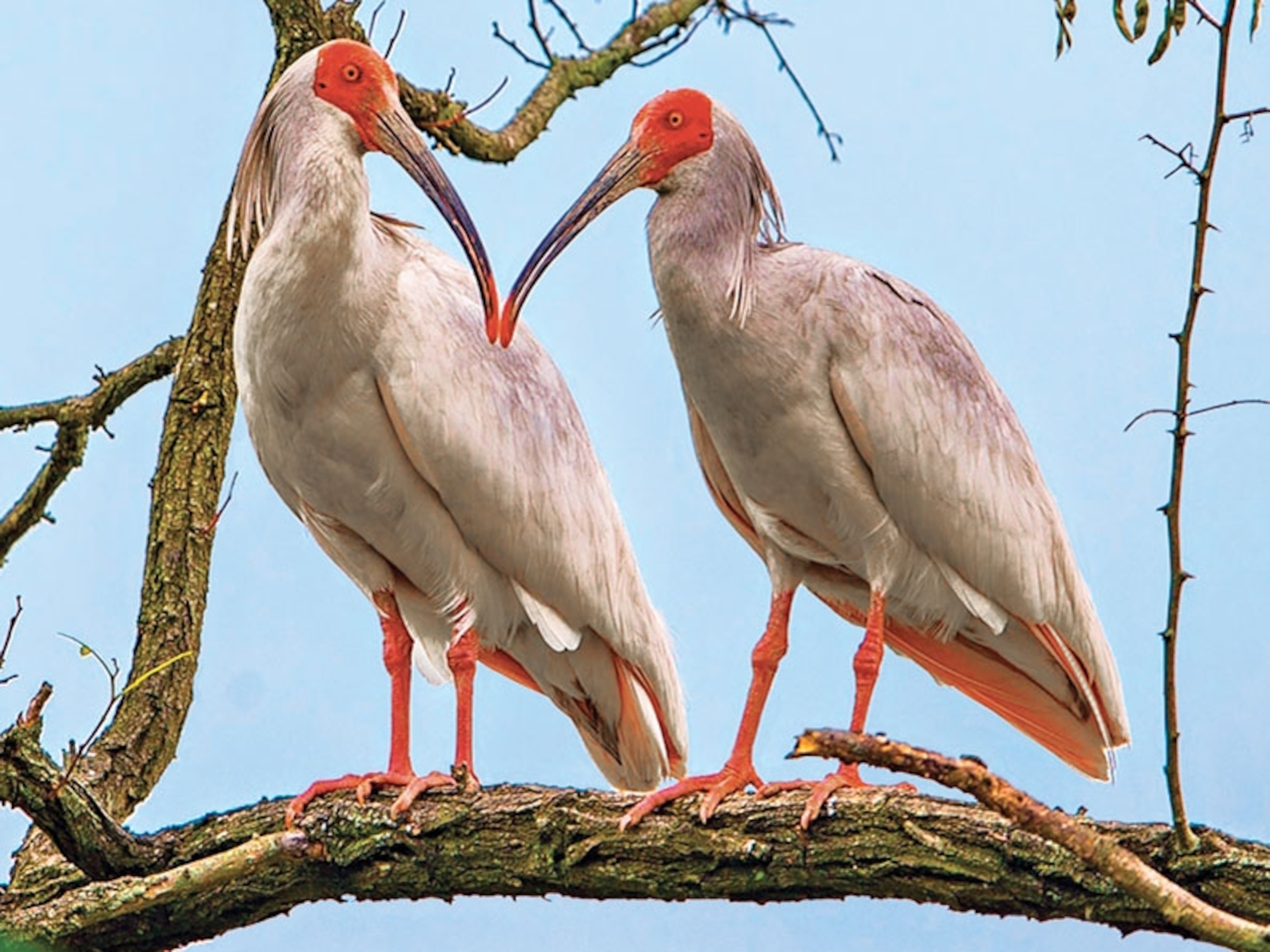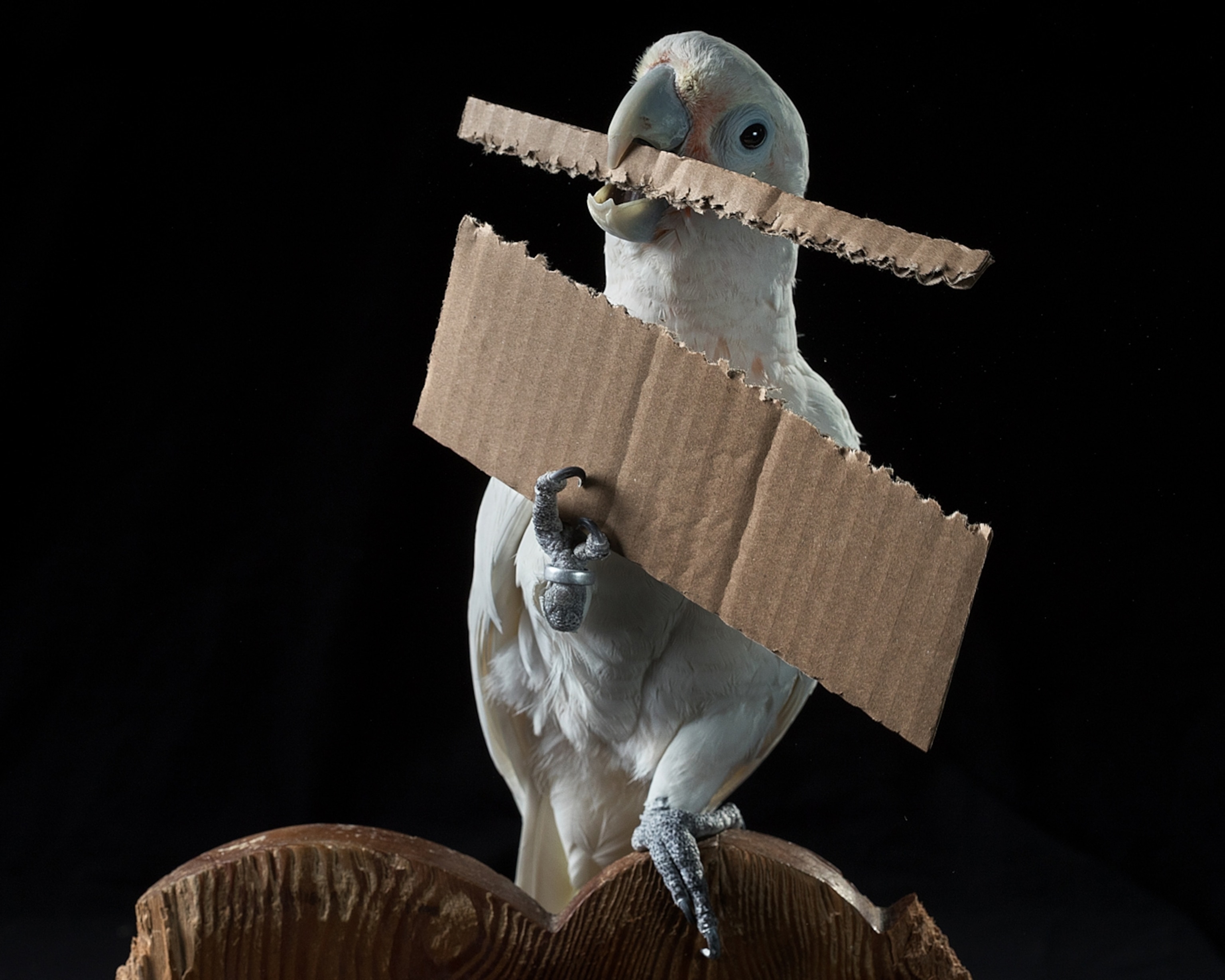
Think ‘Birdbrain’ Is an Insult? Think Again.
Meet Figaro, a Goffin’s cockatoo. He taught himself how to turn cardboard into a tool. Birds, it turns out, are actually brainiacs.
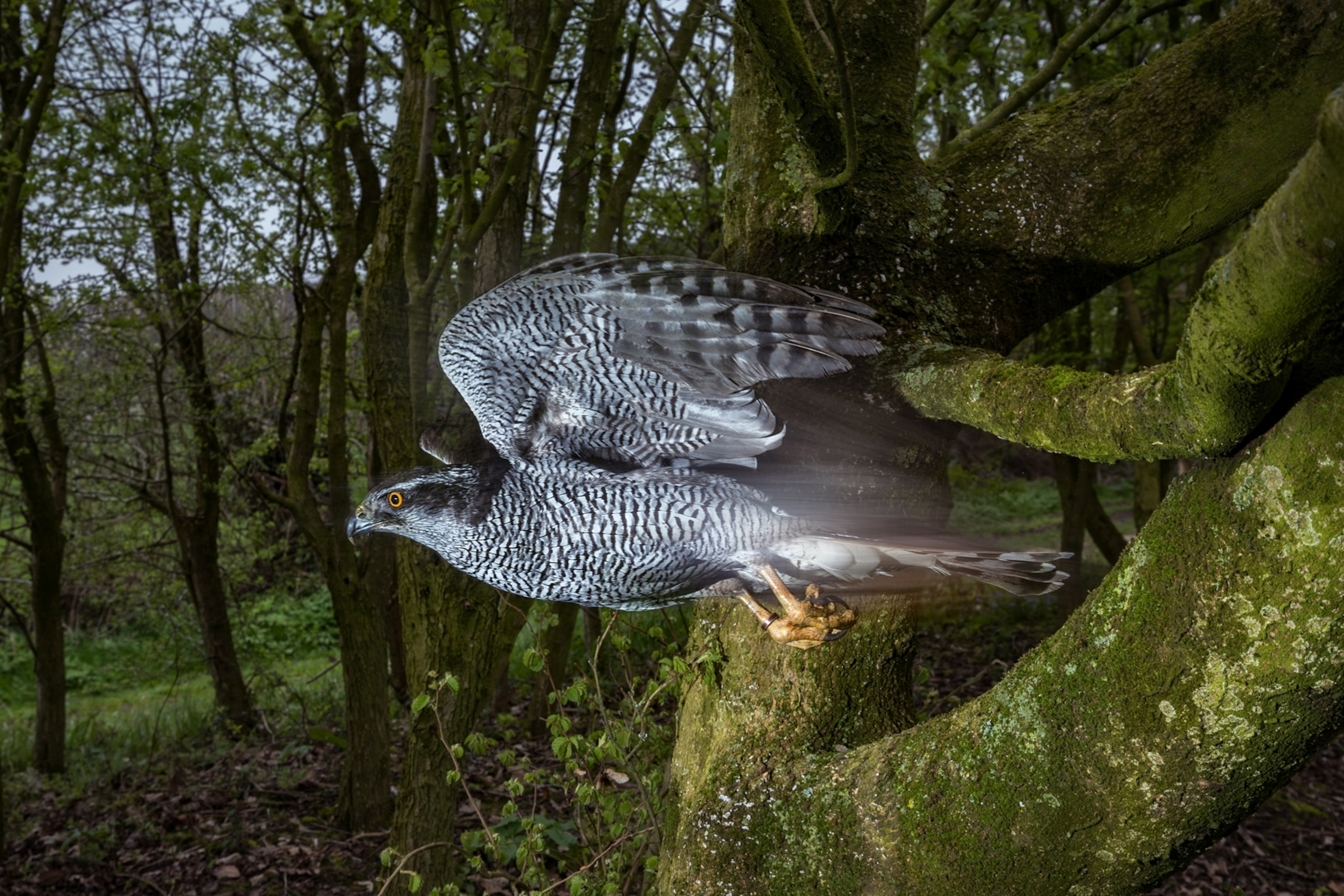
The American crows in Gabriella Mann’s Seattle Neighborhood love her, and the eight-year-old girl has the goods to prove it. She places a plastic jewelry box on a kitchen counter and lifts the lid.
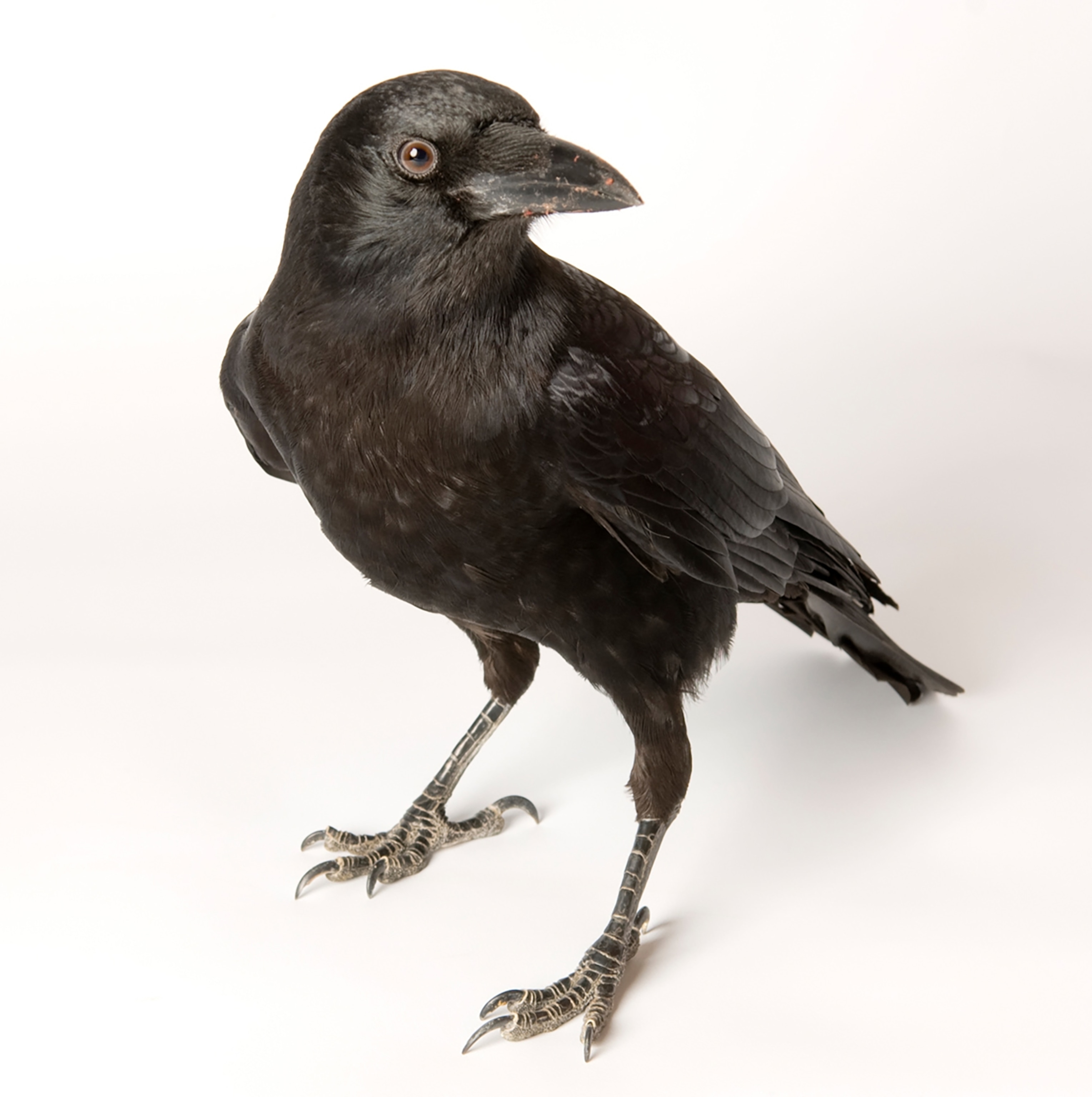
Each small compartment holds a treasure, a gift, that the crows have given her: a gold bead, a pearl earring, a screw, a red Lego piece, colored and clear glass chips, a chicken bone, a pebble, a quartz crystal, and many more.
Though slightly soiled, all are stored as carefully as rare artifacts, dated, and categorized. Gabi selects two that she calls her First Favorites, and holds them up for me to admire. One is a pearly-pink heart charm, the other a tiny, silver rectangle with the word “BEST” engraved on one side. “It’s because they love me,” she says about the seemingly thoughtful objects, adding that she expects the birds will leave her a “FRIEND” charm one day. “They know everything I like—toys and shiny things—because they watch me. They’re like spies.”
Already that morning a crow—likely one Gabi’s brother named Babyface, who has a recognizable patch of gray feathers—has brought her a dead stickleback fish, placing it where it couldn’t be missed: on the stairs leading to the family’s backyard. “This is the second dead fish they’ve brought me. I don’t know why,” Gabi says as she tucks the stickleback’s silvery remains in a plastic bag, affixes a dated label, and places the bag in the freezer. “They aren’t my favorites. But this one’s in better shape; the other one had its head cut off.” Babyface also once left her the head of a baby bird. “Kind of gross.” He brought a different—and from Gabi’s viewpoint, more appropriate—gift that afternoon. She and her brother had dashed to the backyard to replenish the bird feeders. She filled one tray with peanuts in the shell and another with dog food. Two crows flew into the conifers. One was Babyface, and he was holding an orange object in his beak. He moved to an overhead cable, perched above Gabi, and dropped the item so that it landed right at her feet. “Look! A toy!” she cried, scooping up a miniature rubber squid and spinning with joy—a dance Babyface watched from his perch. “See, he knows exactly what I like.”
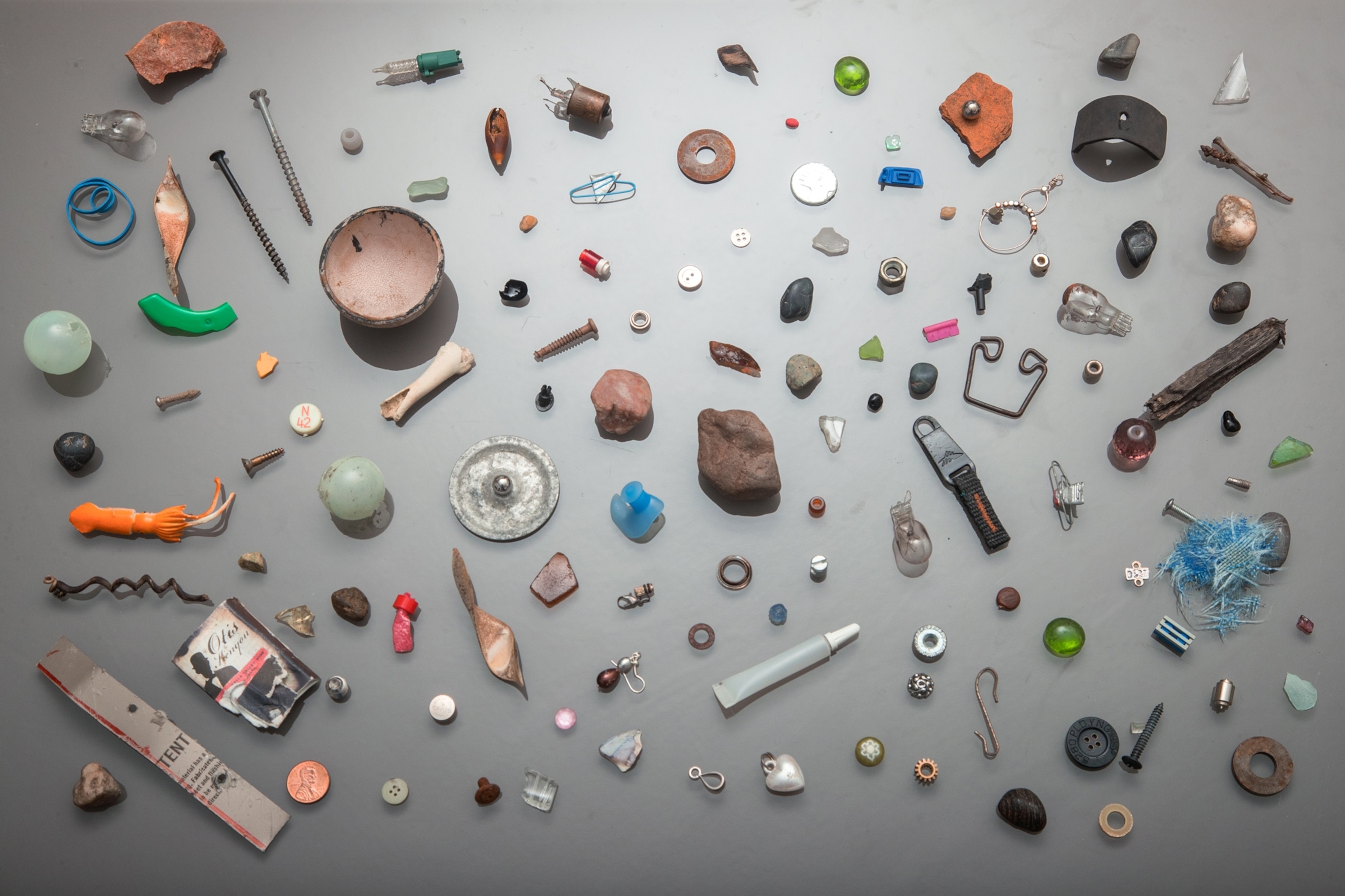
Are the crows actually doing what humans do, bringing gifts to a friend because she’s been kind to them? Can a crow—or any bird—make decisions of this sort? Researchers studying crows, ravens, and other corvids (the family of songbirds that includes crows, jays, rooks, magpies, and others) say yes. Indeed the similarities among humans, other primates, and these birds have riveted scientists studying the origin of our—and other animals’—intellectual abilities. “Birds took a different evolutionary path from mammals but have arrived at seemingly similar cognitive solutions,” says Nathan Emery, a cognitive biologist at Queen Mary University, London, “so they offer a rare opportunity to understand what evolutionary pressures lead to certain mental skills.”
THE YEAR OF THE BIRD
In 1918 Congress passed the Migratory Bird Treaty Act to protect birds from wanton killing. To celebrate the centennial, National Geographic is partnering with the National Audubon Society, BirdLife International, and the Cornell Lab of Ornithology to declare 2018 the Year of the Bird. Sign the pledge to find out this month's action and share your actions using #BirdYourWorld to increase your impact.
Even so, until this century most scientists would have scoffed at the notion of a choosy, generous crow because crows and all birds (and most mammals) were thought to be robotic simpletons, capable only of reacting instinctively to things that happened to them. Birds were dismissed as “birdbrains” even before the scientist Ludwig Edinger misinterpreted their neural anatomy, around 1900. He thought birds lacked a neocortex, the thinking area in the mammalian brain where much of our higher cognitive functioning—working memory, planning, and problem solving—occurs.
Despite this supposed mental deficit, birds were used throughout the 20th century by comparative psychologists in their animal cognition studies. They particularly favored common pigeons, whose brains are just about the size of a shelled peanut, and canaries and zebra finches, whose brains are even smaller. Pigeons, scientists discovered, have impressive memories, with an uncanny ability to distinguish human faces and expressions, letters of the alphabet, even paintings by Monet and Picasso. Other researchers revealed the remarkable memories of Clark’s nutcrackers, scrub jays, and chickadees. Nutcrackers, for example, harvest and cache more than 30,000 pine seeds every autumn, distributing them in several thousand tiny caches they need to remember through the winter.
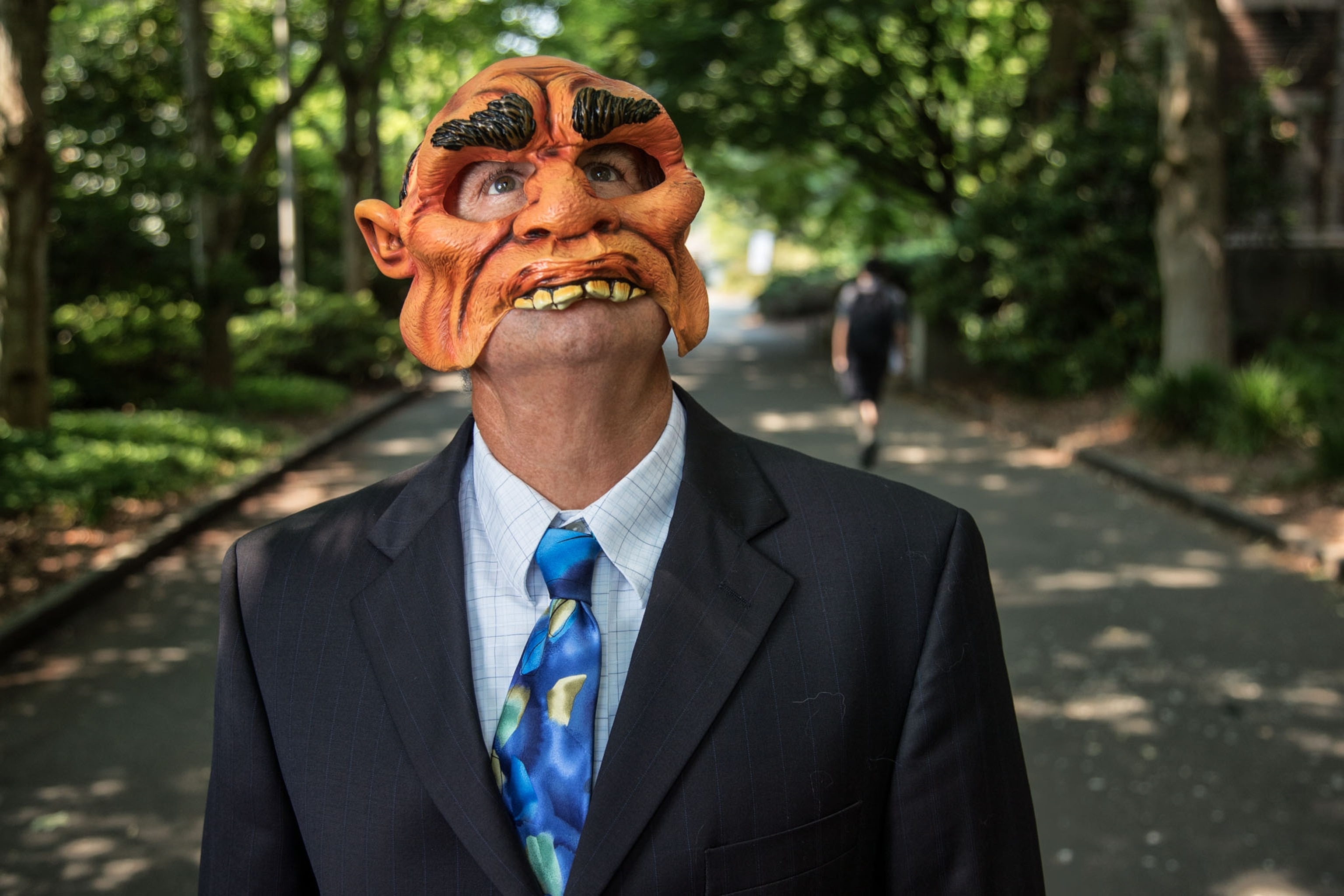
In the 1950s, researchers began studying how songbirds such as canaries, sparrows, and zebra finches learn their songs. They found striking similarities between birdsong and human speech. And then there was Alex, an African gray parrot whom comparative psychologist Irene Pepperberg taught to reproduce English sounds (Pepperberg emphasizes that Alex did not actually learn the English language). By the time of his death in 2007 at age 31, Alex had mastered roughly a hundred English sounds for colors, objects, numbers, and shapes. He could clearly pronounce “green,” “yellow,” “wool,” “wood,” “walnut,” and “banana,” and used these sounds to communicate with people. He understood “same” and “different,” could count to eight, and grasped the abstract concept of zero, or “none,” as he called it. Alex used his talent to talk back, telling Pepperberg to “calm down” when she was in a bad mood, and asking to “go back” when he yearned for his home during an illness that kept him at the vet’s. And he always wished her a good night, as he did just before he died. “You be good. See you tomorrow. I love you.”
Yet because scientists misunderstood the avian brain, most of Pepperberg’s discoveries about Alex were ignored or mocked; she feared that other researchers thought she was somehow giving Alex clues. “His brain was the size of a shelled walnut,” Pepperberg concedes, “so some people thought I was making it all up or that he was cheating.” (Pepperberg videotaped many experiments with Alex.) Of course, a cheating bird would also be an intelligent bird, but the upshot was simply that few scientists in cognition research recognized Alex’s achievements—until a couple of years before he died. Alex’s ability to imitate language—and apparently to use English words in the correct context—has spurred studies of parrots to better understand the origins of vocal learning, which is the ability to imitate purposeful sounds. This is a skill parrots share with songbirds, hummingbirds, humans, cetaceans, and a few other species.
The discoveries finally led an international team of researchers to reexamine the long-standing Edinger model of avian neural anatomy. In 2005 they issued their reevaluation, revealing that birds’ brains do possess neural structures, called the pallium, that resemble the mammalian neocortex and other areas associated with sophisticated thinking. They supported adopting a new nomenclature and understanding of birds’ neural anatomy.

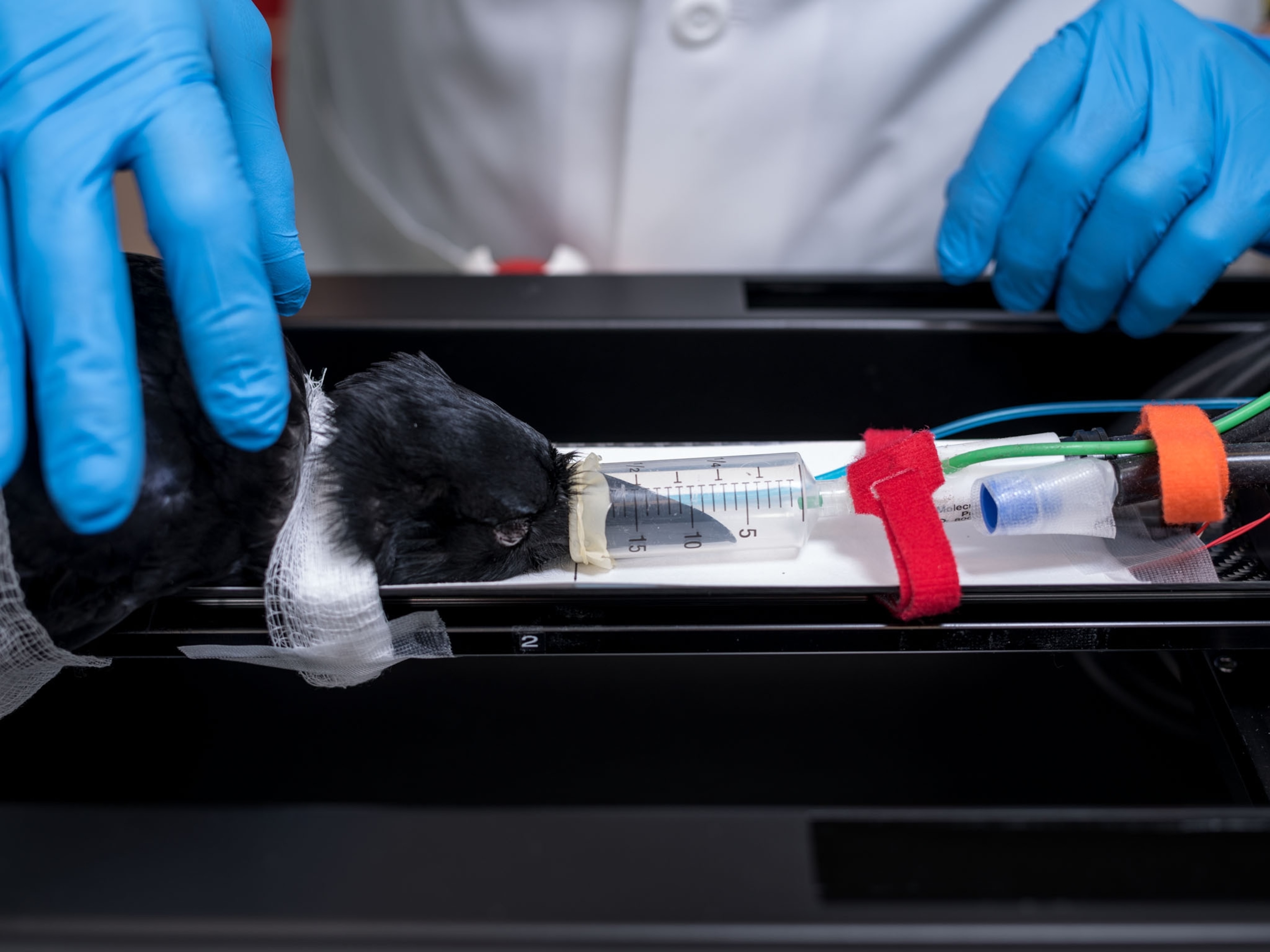
“The parts of birds’ and mammals’ brains are arranged differently,” explains Nicola Clayton, a psychologist at the University of Cambridge, in the United Kingdom, who studies corvid cognition. “Mammals’ brains are layered like a club sandwich, while birds’ brains are more like a pizza. All the pieces are there, but they’re not stacked.” More recently other researchers discovered that the wiring that underlies long-term memory and decision-making is very similar in avian and mammalian brains.
Since then a steady stream of studies from the lab and in the wild has revealed just how bright birds are: Japanese tits, small East Asian songbirds, use their high-pitched pi-pi alarm calls to alert their fellows to predators, and have a kind of grammar, with syntactical rules for combining the pi notes with dee-dee-dee notes to summon the flock to drive off a predator. Green-rumped parrotlets in South America have calls that function as names. Parent parrotlets apparently assign the names to their chicks, much the way human parents give names to their children.
Male palm cockatoos on New Guinea court females with their calls and by fashioning drumsticks from twigs and seedpods and performing rhythmic drum solos on hollow trees—the first animal known to make a musical instrument. Curiously, Goffin’s cockatoos, white parrots from Indonesia, make and use tools in captivity but aren’t known to do so in the wild. “They really like new things and things they can manipulate, like zippers, locks, and shirt buttons,” said Alice Auersperg, standing in her barn-size aviary in Austria while 14 hand-raised cockatoos flapped and whirled overhead. “They’re like little, focused engineers.”
Auersperg, a cognitive biologist at the University of Veterinary Medicine in Vienna, had called her birds over to show me how clever they are at opening locks and inventing tools. She wanted one particular cockatoo, Muppet, but all 14 shoved their way into the test room.
“Ohhh,” Auersperg sighed. “Some people have problems getting their birds to go into testing areas. I have problems keeping them out. They all want to do the tests.” She picked up a long stick and gently poked at the cockatoos, encouraging them to return to the main aviary. “You have to have the personality of a strict kindergarten teacher to work with them,” she said. “You must be consistent and firm, because they’re always trying to take advantage.”
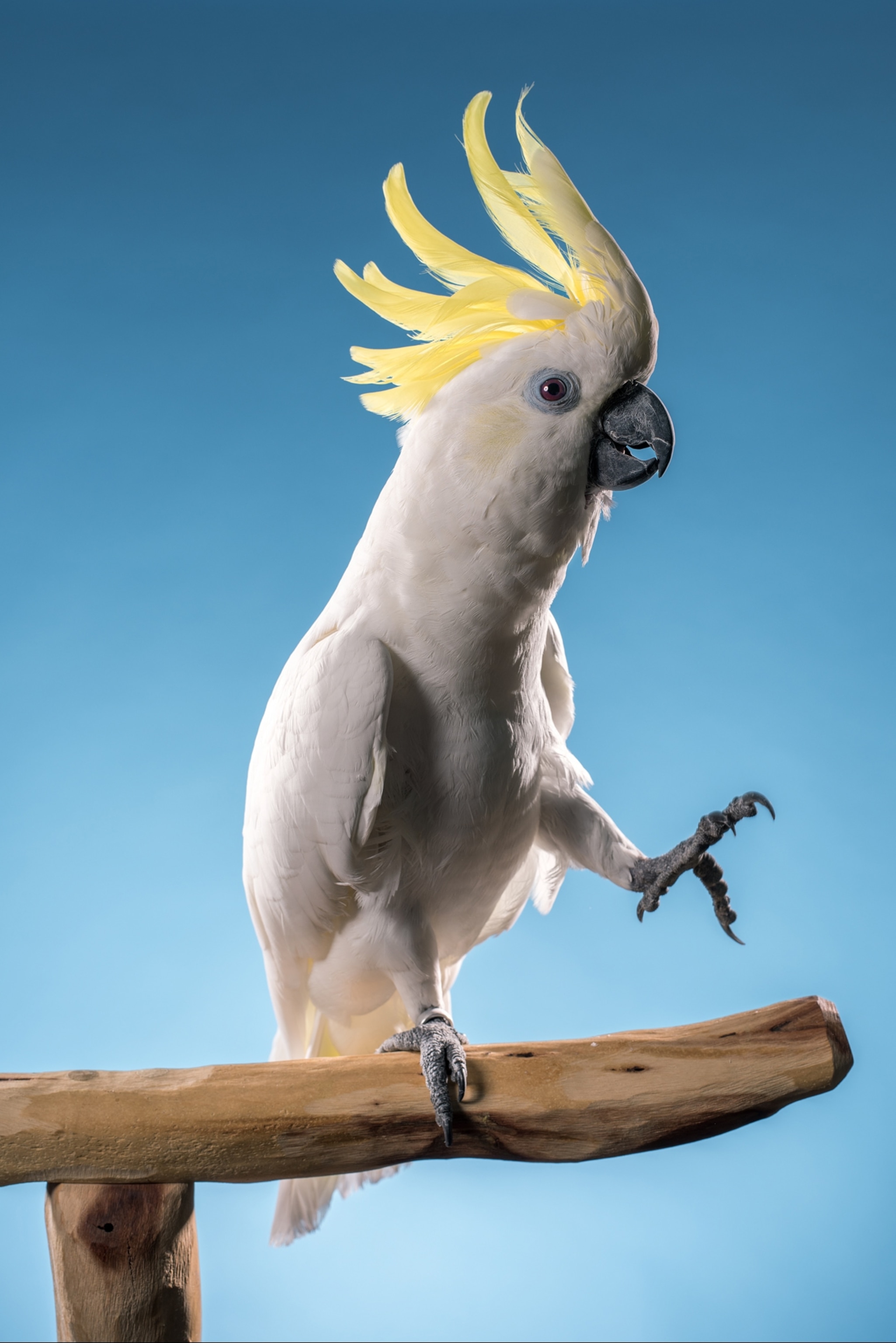
Auersperg finally got all the birds except Muppet to leave the room. With hand signals, she asked Muppet to fly to the testing platform and wait, explaining that the birds can be taught commands such as “come,” “go,” and “stay” as easily as a dog. She placed a puzzle box containing a cashew nut on the platform. We—and Muppet—could glimpse the nut through a window in the box’s door, but the door couldn’t be opened until five locks were removed: a pin, a screw, a bolt, a wheel, and a bar. Each lock jammed access to the next lock, so they had to be opened in a specific sequence. Ten of the cockatoos had opened at least some of the locks, and Muppet and four others had succeeded in getting the nut. All worked persistently at the problem, sometimes solving it after a two-hour effort—a sign of their sophisticated cognition.
For this test, which was designed to see how flexible their minds are, Auersperg had removed the screw—the second lock in the series. Would Muppet understand what had changed and begin with the third lock, the bolt? “We want to know if they’re solving the problem robotically or if they’re paying attention to how the locks work.”
Muppet studied the locks for a moment, then tackled the bolt, using his beak to pull it through a ring that kept it in check. Next he twisted off the wheel and pulled back the sliding bar. The door dropped open, and Muppet seized the nut.
“Once they figure out a problem, they usually remember how to solve it,” Auersperg said. “They know how each lock works, even if they’re out of sequence. I think they do understand the effect the locks have on each other; their minds are flexible that way.”
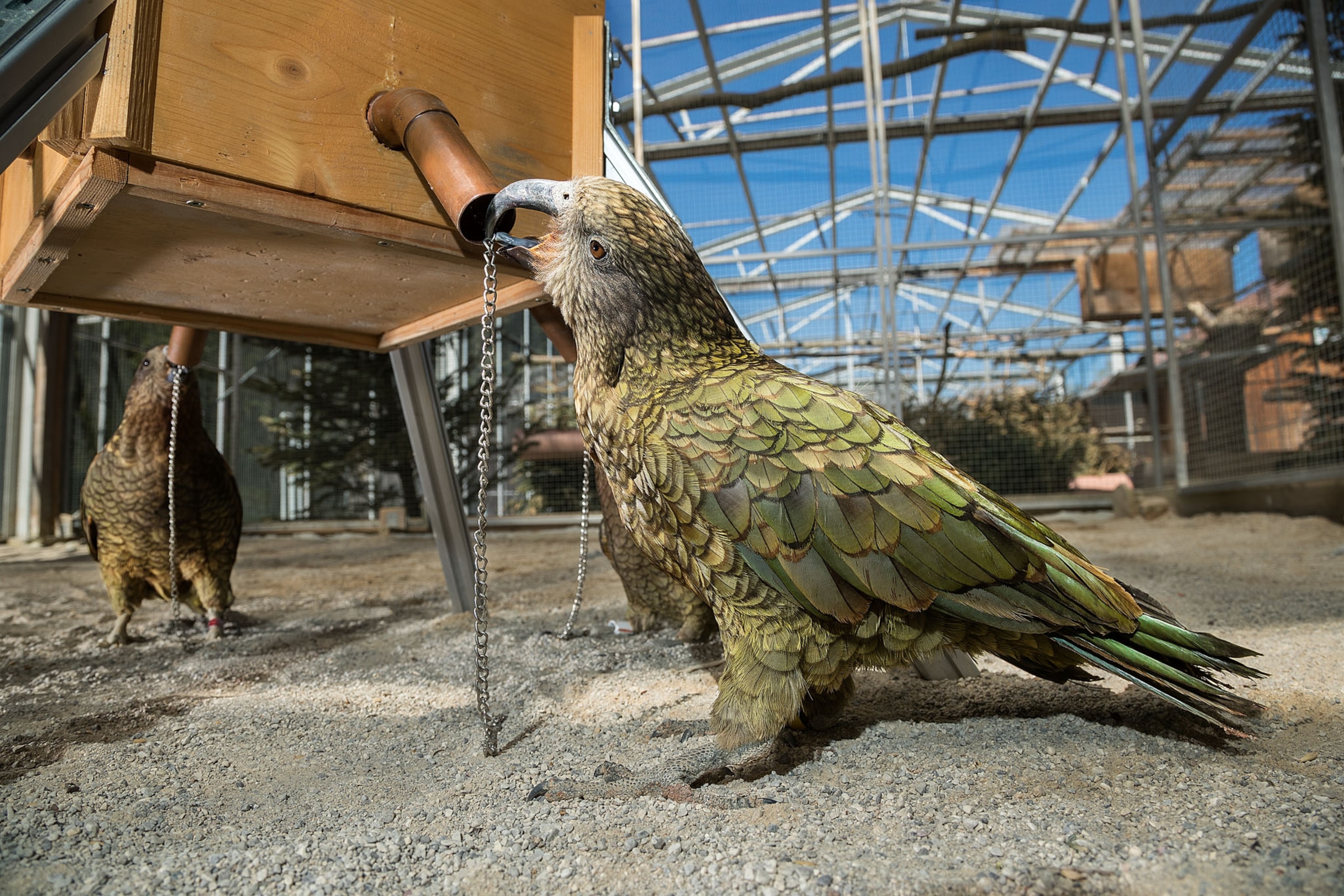
Birds —especially corvids and parrots—are now celebrated as “feathered apes,” biologist Emery says. Emery, who began his career as a primatologist, coined that term for corvids in a paper he co-authored with Clayton, his wife. They’d previously collaborated on a study that showed scrub jays didn’t instinctively re-hide nuts from other spying jays; they only began to move their stash after they stole nuts from their fellows. “It was the experience of stealing that changed the jays’ behavior,” Emery says. “You know, ‘It takes a thief to know a thief.’ ” Their study suggested that the jays might understand what another bird was thinking (and plotting), a type of reasoning that’s extremely difficult to study and demonstrate in other animals.
Emery and Clayton argue that corvids and apes evolved markedly similar complex cognitive abilities even though they’re distantly related—the two groups diverged more than 300 million years ago—because they face similar pressures. Both live in social groups, which require an understanding of others’ motives and desires, and they search for and process a range of foods, some of which can only be acquired by first making a tool. Chimpanzees, orangutans, and just one bird, the New Caledonian crow, excel at doing this in the wild.
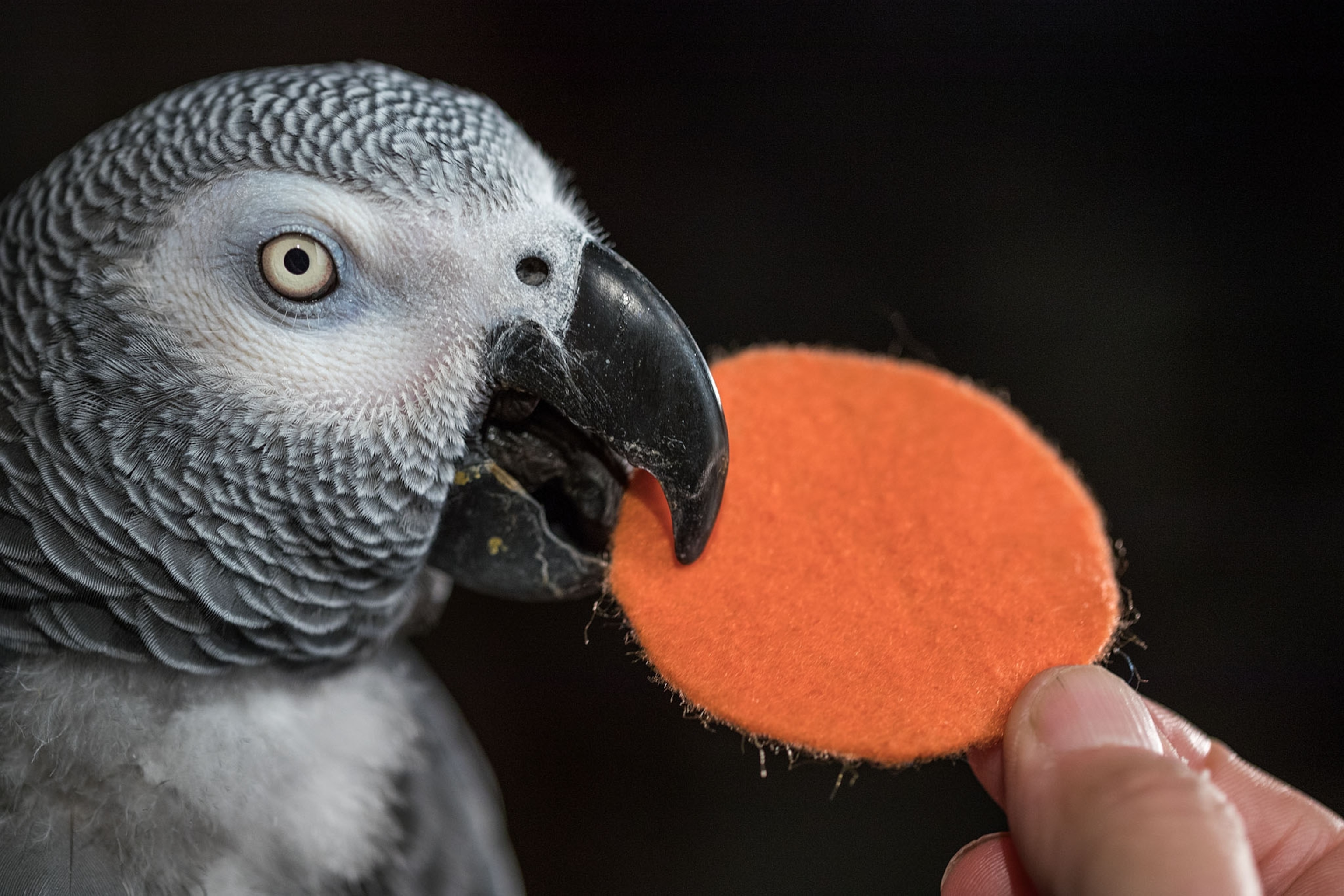
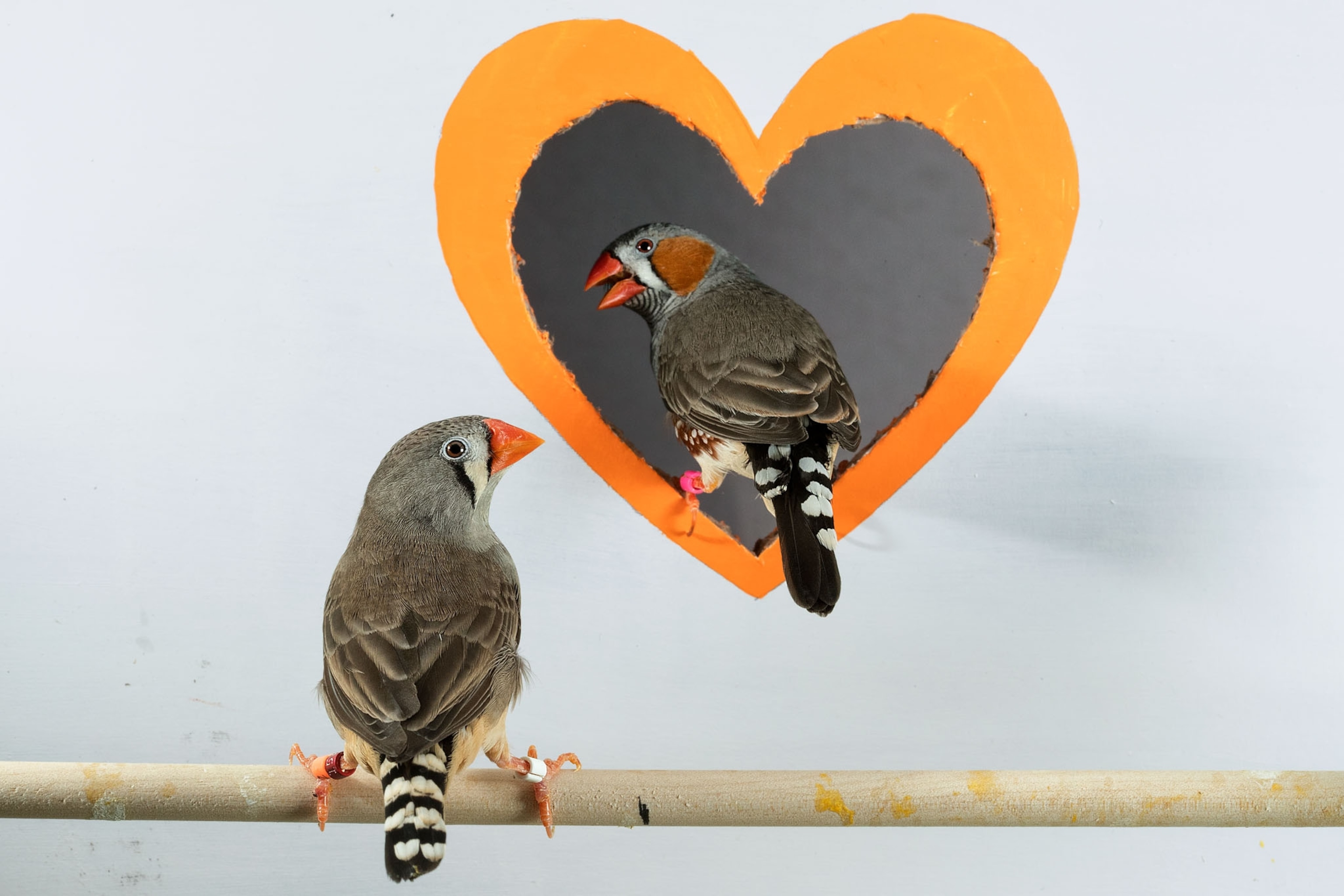
These glossy black birds, which are ancestrally related to American crows, live only on two southwest Pacific islands in New Caledonia. There, one day in 1993, ecologist Gavin Hunt from New Zealand spotted a crow stashing something unusual in a tree; Hunt knocked the object to the forest floor.
“It was what we now call a ‘stepped tool,’ ” Hunt says, selecting it from a cardboard box. “As soon as I saw it, I knew it was a tool: something designed by someone for a specific purpose. If I’d found it at an archaeological dig, you’d say a human made it. But I found it in the forest, and a crow made it.”
Hunt handed me the crow’s tool, which was about six inches long, wide at one end and tapered at the other, with two saw-blade-like steps in between. Pale green in color, the tool was thin and flexible; it had been cut from a leaf of a pandanus shrub, a palmlike plant found on many tropical islands. A human might have used scissors to make this tool. The crow had used its beak. Pandanus leaves are fibrous and edged with tiny barbs.
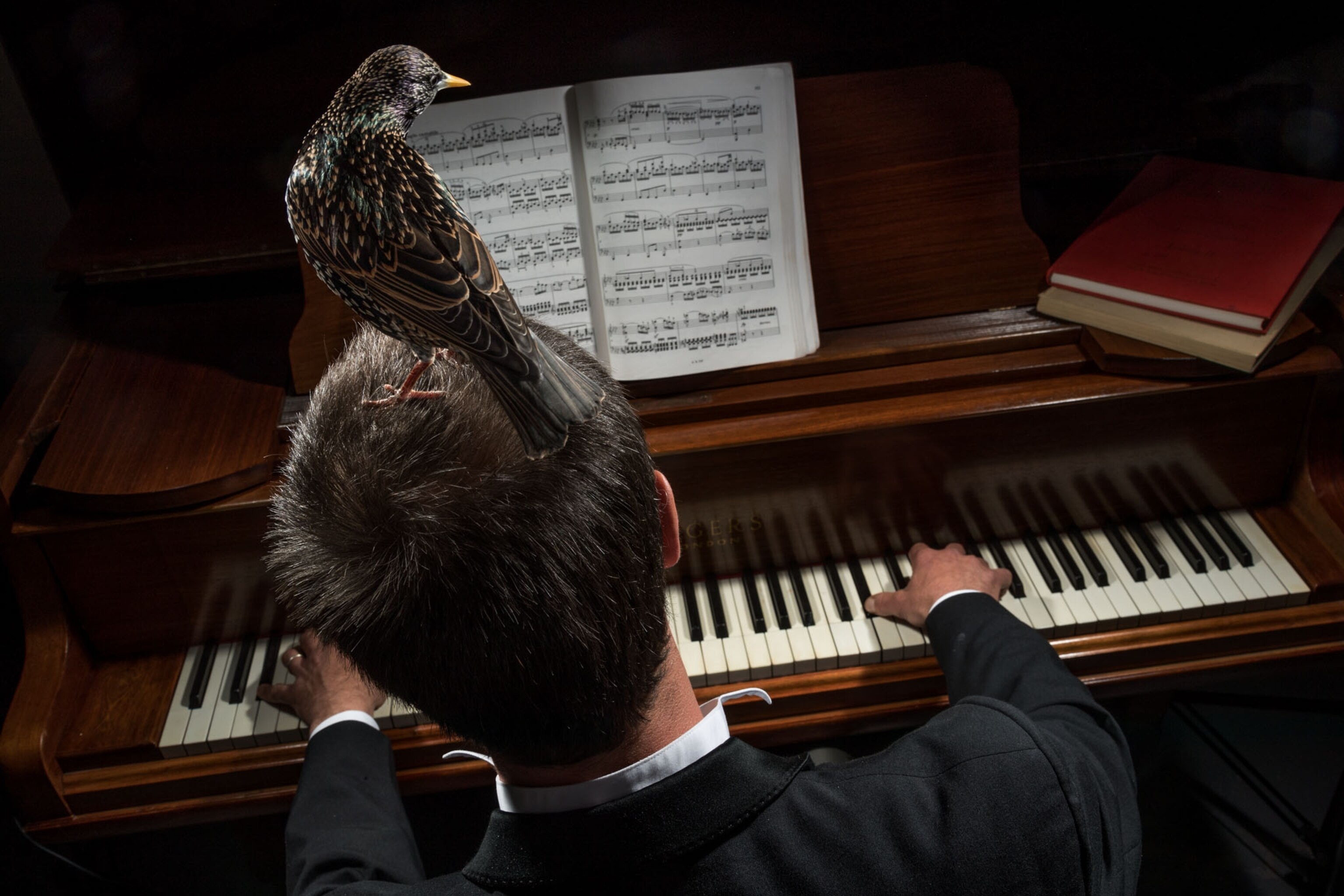
“Because of these parallel fibers,” Hunt noted, “the birds can’t cut the leaves on the diagonal to make that tapered point. So they cut out steps, beginning at the narrow end.”
When finished, the crow holds the tool in its beak and flies to a tree or pandanus shrub to search the crowns for prey such as cockroaches and spiders. The crows also make hooked-twig tools for the same use and straight stick tools to poke into downed and rotting logs for wood-boring beetle grubs, which they try to fish or lever out with their tools. “They have traditions, and they keep them, just as humans do,” Hunt says. “So the stepped pandanus leaf tools and the hooked-twig tools are standardized in terms of size and shape.”
Very few animals make their own implements, especially any with set designs for particular tasks. Until Jane Goodall found that chimpanzees make tools, scientists thought humans were the only animal with this ability—and hypothesized that it helped drive the evolution of human intelligence.
The Year of the Bird
In 1918 Congress passed the Migratory Bird Treaty Act to protect birds from wanton killing. To celebrate the centennial, National Geographic is partnering with the National Audubon Society, BirdLife International, and the Cornell Lab of Ornithology to declare 2018 the Year of the Bird. Watch for more stories, maps, books, events, and social media content throughout the year.
“The discovery that New Caledonian crows do this too, and have a culture of toolmaking, is important because first, it’s something they do naturally in the wild, and second, it shows that this ability has evolved in animals that are not closely related,” says John Marzluff, a wildlife biologist at the University of Washington, Seattle, who studies crows and ravens. “That means this type of tool-manufacturing intelligence has evolved at least twice in entirely different types of brains.” Like chimpanzees who shape a twig into a tool for fishing termites from their nests, New Caledonian crows likely “intend to hunt grubs” when making one of their tools, Marzluff says. “That means they’re planning ahead.”
Corvids are like primates—including humans—in another way. They have large brains relative to their body size. Although brain size isn’t a measure of intelligence, we humans tend to expect a big-brained animal to be smart, because we like to think we are. A 150-pound human’s brain weighs about three pounds, which is 2 percent of total body weight. A raven’s brain may weigh just over half an ounce, but it accounts for 1.3 percent of the bird’s body mass. The size of ravens’ and crows’ brains is even more impressive when you consider their need to fly. “That’s why birds have hollow bones,” explains Alex Taylor, an evolutionary biologist at the University of Auckland who studies New Caledonian crows. “Birds are under pressure to have small bodies for flying, and yet have large brains. So when we see birds with large brains, it’s more remarkable than seeing it in mammals.” And whereas their brains may be nut size, birds make good use of the allotted space by packing in large numbers of neurons. Indeed, recent studies show that corvids, other songbirds, and parrots have neuronal densities that greatly exceed those of mammals.
Still, large brains are a kind of handicap for birds. So why do they have them?
Many researchers think that, as with primates, complicated societies are the real spur behind complex cognition. To test this in ravens, Thomas Bugnyar, a cognitive biologist at the University of Vienna, travels to the Austrian Alps each month to the Konrad Lorenz Research Center for studying animal behavior and cognition. Here, he and his colleagues have examined the social dynamics of a flock of a few hundred wild common ravens—large birds with black, iridescent feathers that are distributed across the world. Common ravens are closely related to American crows, the birds that Gabi Mann befriended.
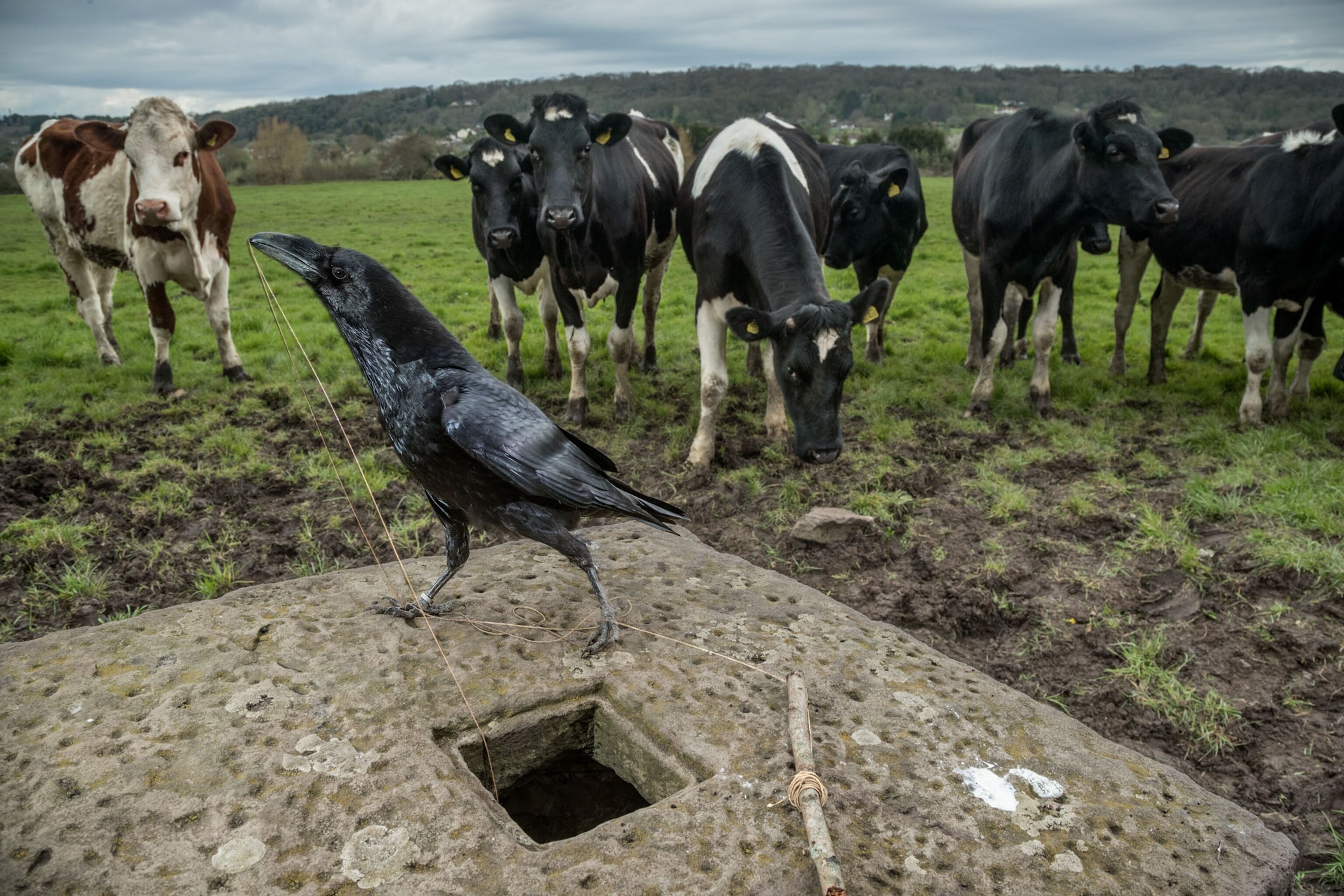
Birds’ societies differ from those of mammals in a fundamental way, Bugnyar stresses. “The most basic social bond in mammals is between mother and infant, but in birds it’s the pair-bond. It’s a bond that develops through learning.”
Ravens begin trying to develop such social bonds when they’re merely six months old, and before they’re sexually mature. Most adult pairs are heterosexual, and the two adults work together to defend a territory for breeding and raising a family. Adults also form alliances with birds other than their mates to build social support networks. Ravens learn about each other—what other birds like or dislike, their personalities, who’s brave and who’s a coward—by watching them stash and give and steal from one another. “They can make an object in their stash more valuable just by showing it to another bird,” Bugnyar explains.
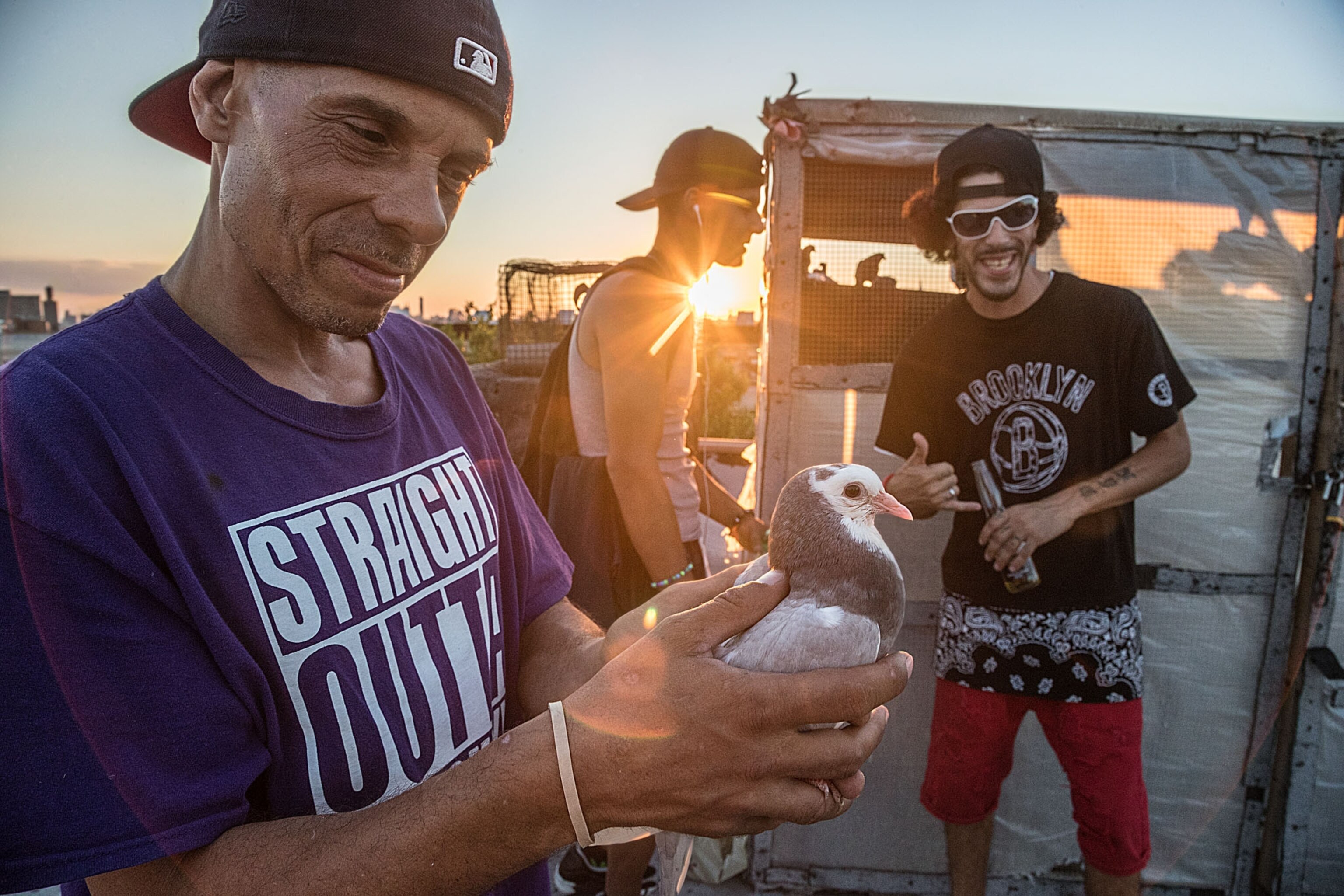
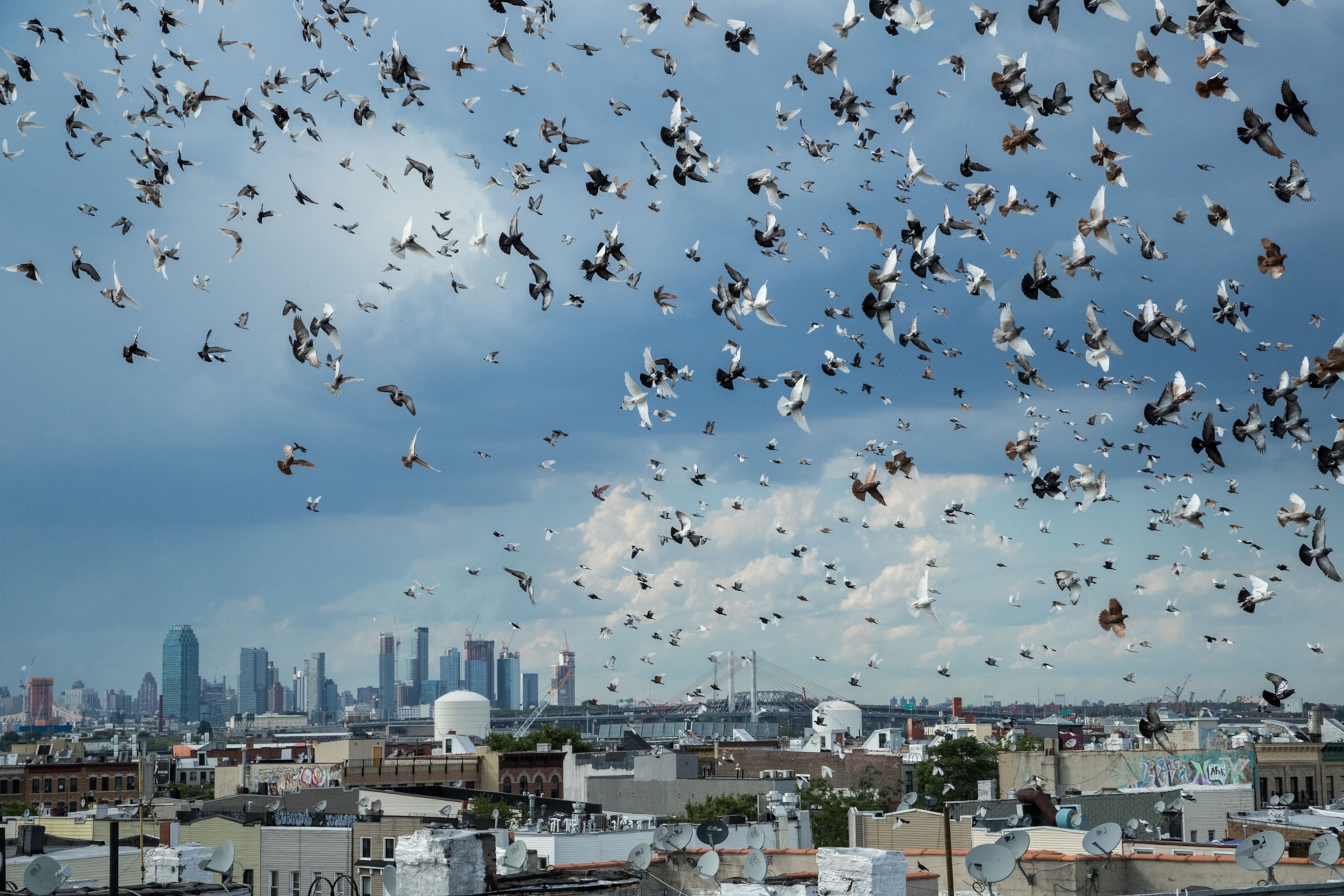
Other ravens keep tabs on any budding relationships, and break them up if possible. Of approximately 180 “affiliative interactions” among 90 ravens that Bugnyar or his colleagues witnessed, “one quarter were broken up by a third party.” That’s because “alliances are powerful. Birds rise in the dominance hierarchy as soon as they form a social bond. The other birds want to prevent them from gaining that power.” Ravens with numerous allies get first dibs on limited resources, such as food and nesting sites.
Further complicating matters, the ravens—like humans, chimpanzees, elephants, and dolphins—live in a “fission-fusion society,” meaning that the larger flock splits apart in the day as individuals fly to other valleys in search of food, new territories, or companions. There are only seven to 10 mated pairs in Bugnyar’s Alpine study group. The hundreds of other birds roost together in small groups at night, where they groom each other, play, squabble, and exchange information. “Usually they go only a short distance to check for food and, we think, social opportunities,” Bugnyar says.
In contrast, the breeding pairs rarely leave the area. All keep track of other birds’ relationships as they try to figure out when it’s most advantageous to aid or intervene with others. “The ravens must learn how to form social bonds and how to use these like tools if they are to successfully reproduce,” Bugnyar explains. “That’s a lot of pressure, and I think it’s led them to evolve their large brains and cognitive skills—at least, I think that’s what my data will ultimately show.”
So why do crows in Seattle bother to present gifts to a human girl?
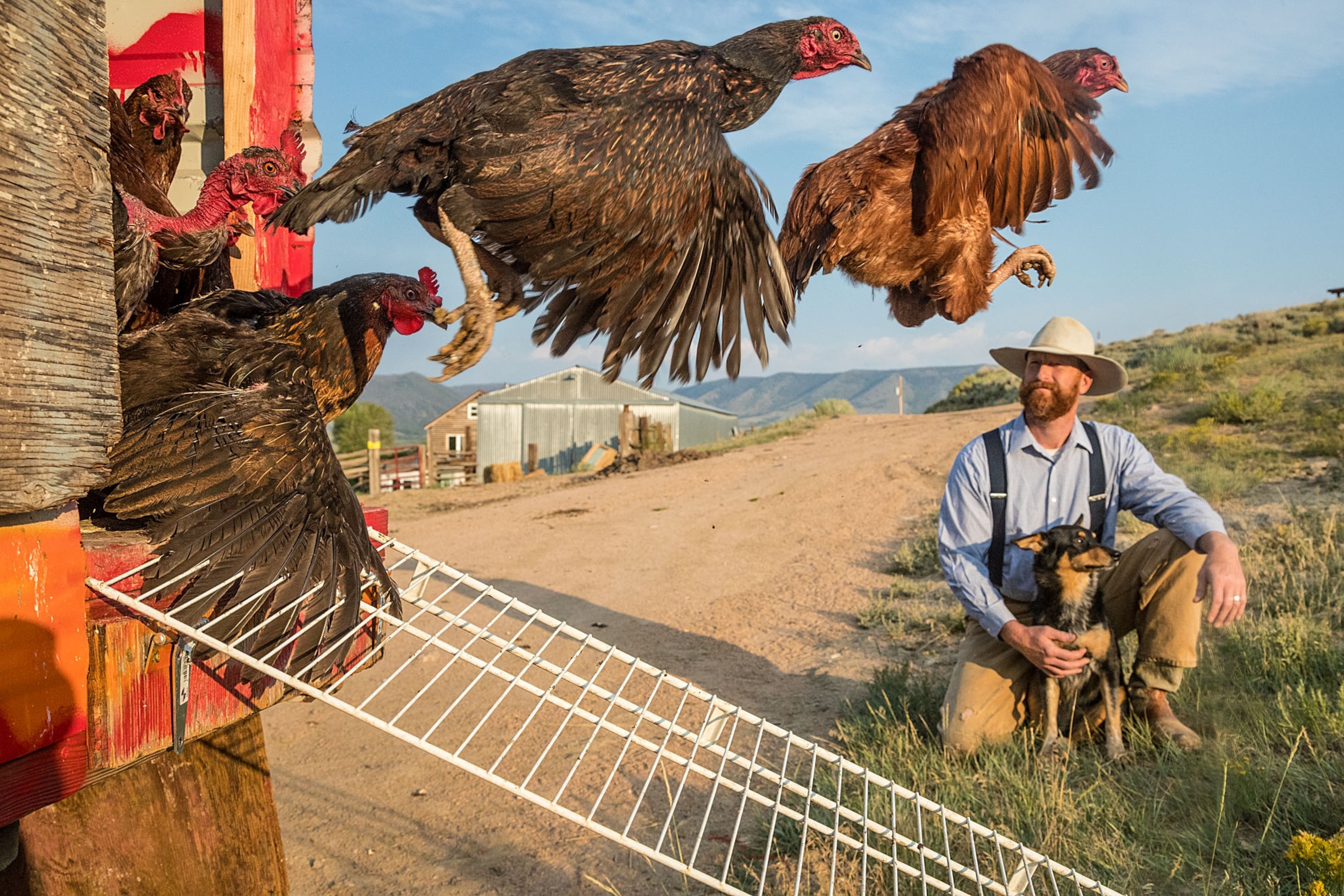
“I don’t know why they do it,” Bugnyar says. “Gift giving is in their natural repertoire. So it’s likely they give her gifts because they’ve learned that she is giving them food.”
“It’s a two-way communication,” agrees John Marzluff. “Gabi consistently provides food, and the crows regard the food as a gift. In exchange they bring her presents.” It’s rare for wild birds—other than crows and ravens—to offer objects to people. “When they bring gifts, people pay attention,” Marzluff says, “and the birds notice our response,” just as Babyface observed Gabi’s reaction when he dropped the toy squid. “It’s a reciprocal exchange; some might say it’s a way of thanking Gabi.” And the crows know Gabi, Marzluff says. He and his students carried out a series of experiments on his university campus that showed crows never forget a face. They recognize people who harassed them years before at nesting sites and even pass this information on to their chicks and other crows.
Gabi and her family recently moved to Ithaca, New York. She’s traveled back and forth a few times, much like a raven on the wing, as her parents complete the transition. Each time they return to Seattle, Gabi sets out food for the crows, although at a neighbor’s home. She sees Babyface and his friends and says the birds know when she and her family are back: “They recognize our car.” When she leaves, she bids him and the others farewell. She thinks he worries about her, just as she worries about him. And she wishes for Babyface what she thinks he wishes for her: a good life with lots of friends, and stashes of bright objects and nuts in her new territory.





